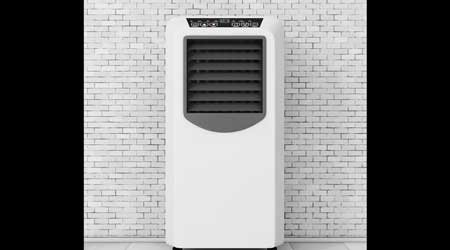3 Key Questions to Get the Right Portable Cooling Units
From intake air-flow capacity metrics to HEPA filter requirements, here is what to consider when renting portable cooling units.
Front-line technicians in maintenance and engineering departments rely on a core arsenal of equipment and tools to complete many daily tasks throughout institutional and commercial facilities. But to handle the full range of maintenance and engineering tasks, managers often supplement this arsenal with key pieces of rental equipment.
The equipment rental process can be challenging, requiring managers to gather and analyze a great deal of information before making a final selection. To help them sort through and prioritize this information, let’s focus on three important questions to answer before renting portable cooling units. The three questions:
• What physical requirements must the equipment meet?
• What controls, accessories, and documentation should the equipment have?
• What are the most important worksite conditions?
The first priority when renting portable cooling equipment is calculating the cooling load and objective, whether that is to backup up an entire central air conditioning system or selected critical loads, such as computer rooms and data centers.
One particularly important concern to address is intake airflow capacity. With concerns about the coronavirus running especially high, one key to successfully preventing indoor air problems is ensuring proper air exchanges. ASHRAE updates these standards. For example, the outdoor airflow rate for certain sizes of classrooms is 7.5 cubic feet per minute (cfm) per person. When the intake air is provided by temporary means, managers must pay especially close attention to ensure proper air-exchange volume.
To save energy, many permanent air-intake systems had been reduced to minimum requirements. Now, pandemic conditions require more air flow. So managers should not use the current installed intake volume as a guide for portable cooling equipment. Instead, they should recalculate the volume based on current recommended levels.
They also need to plan airflow patterns to avoid distributing contaminated air. An effective three-way defense against the coronavirus involves proper air volume, good filtration with carbon and true HEPA filtering to remove a range of particulates of different sizes, and ultraviolet lamps on intakes.
When it comes to specifying controls and documentation, managers should prepare a plan listing specific objectives before the need arises. Technicians need to measure room size and height, the type of ceiling and venting, and they should list activities in each room and heat load in BTUs and tons.
To meet these needs, managers need to specify available power-source locations and requirements for grounded plug configuration and include adequate controls for emergency equipment, such as autotransfer switches to quickly switch from building distribution to special generators if needed. Managers also should be sure operating and maintenance documentation, safety tips and appropriate safety data sheets for cleaners, lubricants and refrigerants are available and that technicians understand them.
Worksite conditions to consider for portable cooling equipment include the type of space — classroom, operating room, business office, etc. — the location, the layout, the mounting platform, weather protection and fuel. For example, if natural gas fuels the unit, managers must specify the source of supply and the fuel-line and fittings layout for running the line from the source to the engine.
Worksite concerns can go beyond the physical layout and features of the facility. Consider the scenario of a storm that causes 10 rooftop air conditioners on a building to topple from their bases. The manager must have a quick-response plan coordinated with a local supplier who has experience assessing whether the units can be reset on their bases or need repairs.
The supplier also needs a good inventory of repair parts and units for such situations, as well as MEWPs to give technicians access to the units or the ability to size the units to go through roof access hatches. Having a supplier agreement ahead of time will ensure the facility gets high priority when an area is hit with a disaster that causes multiple cooling failures at one time.
Selecting the most effective rental equipment for the job needs to include checking that it meets facility needs, checking the work in progress, maintaining the equipment so it performs at peak and minimizing door-to-door time and cost in order to meet the manager’s objectives of an effective maintenance program.
Thomas A. Westerkamp is a maintenance and engineering management consultant and president of the work management division of Westerkamp Group LLC.
Related Topics:










